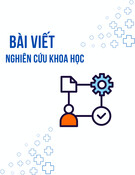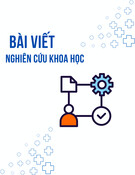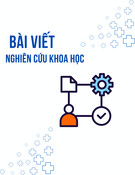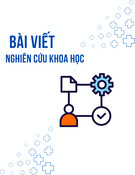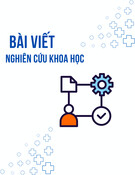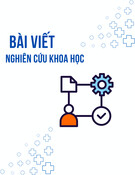CHAPTER 7
PERFORMANCE MEARSUREMENT & MANAGEMENT MANAGEMENT
SU DINH THANH
LEARNING OBJECTIVES
THE EVOLUTION OF PERFORMANCE MANAGEMENT MANAGEMENT
THE EVOLUTION OF PERFORMANCE MANAGEMENT MANAGEMENT
t (NPM) (NPM) of l i
th i t ti t i t l
(cid:132) However, NPM did not originate the idea of
actively ti l (cid:132) The new public management t bli (cid:132) Th performance significance the emphasizes measurement as a management tool in government. t t t Indeed, accurate performance information is needed for the implementation of management instruments f t f such as performance pay, performance contracts or performance budgets. b d t f
measuring government performance.
Evolution…
(cid:132) This
influence increased civil of
(PPBS), and afterwards,
(cid:132) management by objectives (MBO) and, (cid:132) zero-based budgeting (ZBB).
servants cumulated in the development of planning and management techniques and systems such as (cid:132) the planning programming budgeting system
Evolution…
(cid:132) In the late 1980s and 1990s, there was a new d 1990 I emphasis on performance management, mainly due to rising fiscal deficits In this phase the main due to rising fiscal deficits. In this phase, the main objective of performance measurement was to identify how to increase efficiency and/or to cut identify how to increase efficiency and/or to cut spending.
(cid:132) By the mid (cid:132) By the mid-
h h l 1980
p p g
and late 1990s, government and late 1990s government performance was increasingly seen as a key component of the competitive advantage of national economies and a contributory factor in overall societal performance.
Evolution…
(cid:132) Minimizing the public sector was no longer the h reform strategy gained gained
h i i bli l
concerns concerns and and
(cid:132) => The focus of performance measurement and (cid:132) => The focus of performance measurement and management has changed over time in accordance with the dominant understanding of what constitutes with the dominant understanding of what constitutes government performance. (cid:132) At present, the decline in trust of public institutions is (cid:132) At present, the decline in trust of public institutions is pushing performance measurement systems towards measurement of quality of life indicators and the quality of governance.
Mi i dominant public management Effectiveness quality quality Effectiveness importance in many countries.
KEY CONCEPTS IN PERFORMANCE MEASUREMENT
(cid:132) The input–output model of performance
(cid:132) Performance indicators (cid:132) Performance standards Performance standards (cid:132) Statistical techniques for performance measurement
measurement
The input – output model of performance measurement measurement
(cid:132) There are a number of levels at which performance measurement can operate => it may refer to the measurement of inputs, outputs or outcomes, and it may focus on economy, efficiency or effectiveness. (cid:132) We integrate these concepts in an input–output
followings:g
model of the policy and management cycle. (cid:132) We can illustrate the policy and management cycle
The input – output model of performance measurement measurement
Performance indicators Performance indicators
Performance indicators Performance indicators
Performance indicators Performance indicators
(cid:132) There are five main performance indicators:
(cid:132) Economyy (cid:132) Productivity (cid:132) Efficiency (cid:132) Efficiency (cid:132) Effectiveness (cid:132) Cost-effectiveness
(cid:132) Can you explain these indicators?
p
y
Performance standards Performance standards
(cid:132) Standards for good policies; (cid:132) Standards based on scientific norm; (cid:132) The standards are set by comparison, usually across across
between between periods periods time time or or
a o w o e o ga
e o ga
either either organizations. (cid:132) Time series analysis compares past performance (cid:132) Time series analysis compares past performance with current performance. Cross-section analysis a o s co pa es compares the organization with other organizations
Statistical techniques for performance measurement
(cid:132) Several techniques might enhance the processing
p
y
Hull
capacity of the organization. (cid:132) Stochastic Frontier Analysis p (cid:132) Data Envelopment Analysis and Free Disposal
IMFORMATION IN PERFORMANCE MANAGEMENT
(cid:132) Performance measurement becomes valuable only
(cid:132) Performance management can be broadly defined
when it is followed by management action.
(cid:132) Causal models and more qualitative research are
as ‘acting upon performance information’. g p p
needed to provide this in depth information needed to provide this in-depth information
IMFORMATION IN PERFORMANCE MANAGEMENT
(cid:132) Performance
information may be used for for financial or in
(cid:132) The policy cycle consists of
four
steps: policy
preparation, decision, implementation and evaluation. (cid:132) Performance information can be used so that stakeholders can hold each other to account for how well they have each performed their assigned responsibilities
different purposes – in the policy cycle, accountability purposes management
SOME TRAPS AND LESSONS IN PERFORMANCE MANAGEMENT
y f g
g
(cid:132) Performance measurement opens up interesting sector possibilities management and policy making. However, it also contains some traps. (cid:132) Lack of interest of politicians and/or citizens. g (cid:132) Vagueness and ambiguity of goals. (cid:132) Risk of data corruption is higher (Schools only
f
teach for test…) ) (cid:132) Centralization and decentralization
for public enhancing
SOME TRAPS AND LESSONS IN PERFORMANCE MANAGEMENT
SOME TRAPS AND LESSONS IN PERFORMANCE MANAGEMENT
p
g
Performance measurement has a number of functions, which have a rising degree of which have a rising degree of compulsion: transparency – learn – appraise – sanction. The more performance The more performance measurement is used compulsively, the more it will be experienced as unfair and the more it will cause perverting behaviour (see ) Figure 2.1).













